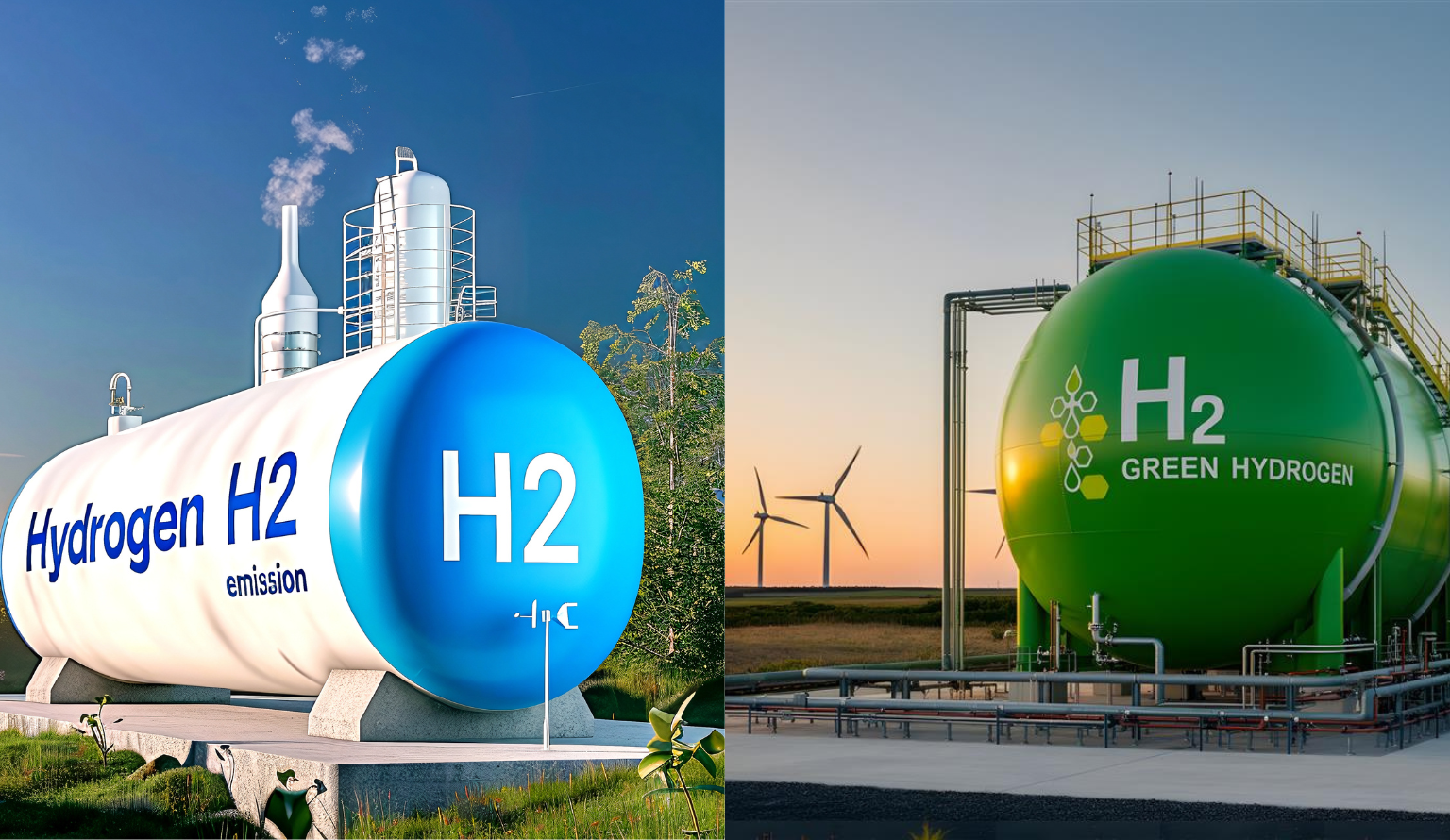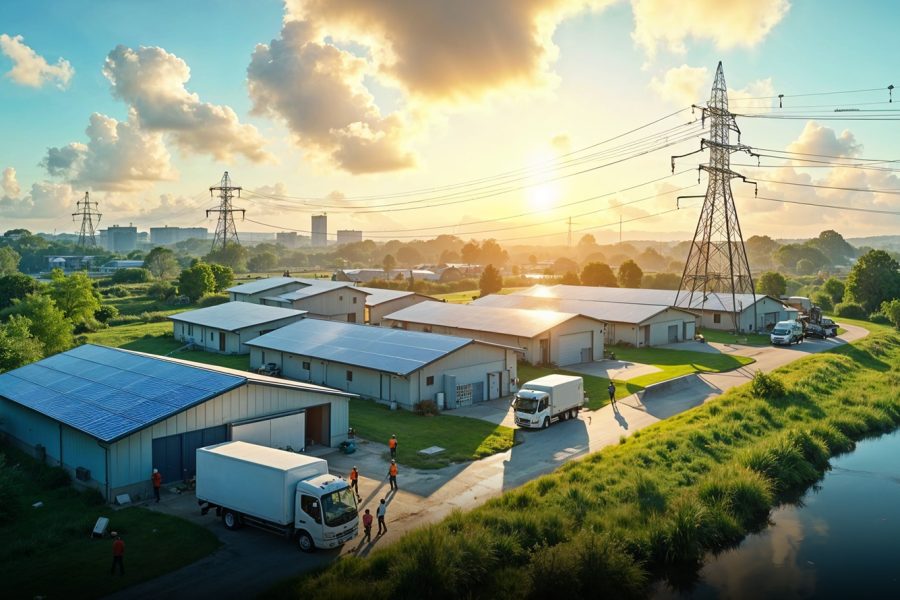As the world rallies around the urgent need for decarbonisation and energy security, the conversation surrounding green hydrogen India vs. blue hydrogen India is taking centre stage, particularly for a country like India, which is poised to leap into a low-carbon future.
With India striving to establish itself as a leader in the production of green molecules, it’s crucial to identify which type of hydrogen best aligns with its sustainable energy goals. In this hydrogen energy comparison, we explore both green and blue hydrogen through the lenses of cost, emissions, feasibility, and policy, while understanding how Jakson can play a transformative role in this evolving ecosystem.
In this hydrogen energy comparison, you will get to know about both green and blue hydrogen through the lenses of cost, emissions, technical feasibility, and alignment with India’s evolving policy landscape. This analysis aims to shed light on where investments should ideally be channelled, guiding us toward a more sustainable and secure energy landscape.
What is Green Hydrogen and Blue Hydrogen?
When we talk about the future of hydrogen energy in India, it’s essential to grasp the difference between Green Hydrogen and Blue Hydrogen.
- Green Hydrogen is produced using renewable electricity, like solar and wind, to split water into hydrogen and oxygen. This method is a clean fuel alternative, producing nearly zero carbon emissions. Jakson, with its robust solar energy and EPC capabilities, are integral to powering this transition through renewable-based hydrogen production.
- Blue Hydrogen comes from natural gas or fossil fuels. While it uses technology like carbon capture and storage (CCS) to reduce emissions, it still carries some environmental risks.
Hydrogen Energy Comparison: Cost, Emissions, and Feasibility
| Feature / Metric | Green Hydrogen | Blue Hydrogen |
| Feedstock / Energy Source | Renewable electricity + water | Natural gas + CCS/CCU |
| Carbon Emissions | Near zero | Reduced but residual emissions are possible |
| Present Cost (India) | ₹ 300–450 per kg | ₹ 115–160 per kg |
| Future Cost Trend | Declining with scale and tech improvements | Moderate gains, limited by fossil feedstock costs |
| Infrastructure Needs | New electrolysers, storage, pipelines, transport | Can adapt some existing gas infrastructure |
| Suitability / Use Cases | Heavy industry, transport, and long-term decarbonisation | Transitional power, blending, near-term adoption |
| Strategic Fit for India | High alignment with renewable goals and emissions targets | Useful bridging role but limited net benefit |
Cost Factor: Green vs Blue Hydrogen (India)
Currently, the cost of blue hydrogen in India ranges from ₹115 to ₹160 per kg, whereas green hydrogen is significantly more expensive, priced between ₹300 and ₹450 per kg. However, as renewable energy costs decline and electrolysis technology improves, it is anticipated that green hydrogen will become more cost-competitive, potentially dropping to around ₹143 – ₹202 per kg by 2030..
With its large-scale solar manufacturing capacity and integrated EPC solutions, Jakson is well-positioned to contribute to lowering renewable electricity costs, an essential factor in making green hydrogen commercially viable in India.
Environmental Impact of Green and Blue Hydrogen
Green hydrogen offers a near-zero carbon footprint, making it an excellent option for decarbonising sectors such as steel, cement, and shipping. In contrast, while blue hydrogen reduces emissions compared to grey hydrogen, it falls short of achieving deep decarbonization due to its inherent residual emissions and the risk of leakage.
Technical Challenges and Infrastructure Requirements
The production of renewable hydrogen encounters several hurdles, particularly in areas such as storage, transportation, and electrolysis technology. On the other hand, blue hydrogen can utilise some existing natural gas infrastructure, rendering it a viable short-term solution until green hydrogen capabilities are fully developed.
India’s Strategic Context and Hydrogen Policy
Right now, India produces around 6 million tonnes of hydrogen mostly through grey methods. However, with the Hydrogen Policy India under the National Green Hydrogen Mission, the aim is to produce 5 million tonnes of green hydrogen annually by 2030. This policy encourages the use of green hydrogen in industries like refineries and fertilisers, helping the country tap into its abundant renewable energy potential.
In terms of hydrogen investment in India, there is a strong push for both green and blue hydrogen. The strategic outlook highlights a significant opportunity to build a robust hydrogen economy.
What Should India Invest In?
India must prioritise investment in green hydrogen as it seeks a sustainable energy future. Green hydrogen is a clean fuel alternative essential for decarbonising industry and achieving energy independence. While blue hydrogen can help utilise existing natural gas infrastructure in the short term, it should not be the end goal.
With its deep expertise in solar EPC, module manufacturing, and energy infrastructure, Jakson is strategically positioned to enable the production and scalability of green hydrogen, helping India progress toward net-zero goals.
For a thriving hydrogen economy, India should focus on renewable hydrogen production and create supportive hydrogen policies through incentives and research. The future of hydrogen energy lies in a mixed ecosystem where green hydrogen progressively displaces blue hydrogen. By investing in green hydrogen, India can lead the global clean energy transition and build a sustainable future.
The Future of Hydrogen Energy in India
India’s journey in the hydrogen economy is about balancing blue hydrogen and green hydrogen. While blue hydrogen can help cut emissions and develop infrastructure quickly, it’s green hydrogen that will drive the deep decarbonisation we need.
As a leader in renewable hydrogen production and electrolyser manufacturing, India should focus on green hydrogen as the core of our hydrogen policy. This approach will not only support clean fuel alternatives but also enhance energy security with minimal emissions.
To achieve this, investments and policies must prioritise green hydrogen while recognising the role of blue hydrogen in the medium term. By doing so, we can pave the way for a thriving hydrogen economy and a sustainable future.
FAQs
Q1: Will blue hydrogen hinder India’s carbon targets?
Yes, blue hydrogen is not entirely emissions-free and has risks of leakages. It can reduce emissions compared to grey hydrogen, but cannot replace green hydrogen for long-term targets.
Q2: When can green hydrogen become cost-competitive in India?
By 2030, the cost of green hydrogen is projected to fall to around US$1.7 to US$2.4 per kg due to improvements in electrolyser technology and lower renewable energy costs.
Q3: Can India use existing gas infrastructure for hydrogen transport?
Partially. Current gas pipelines and city gas networks can be modified for hydrogen transport initially, but new infrastructure will be needed for large-scale high-pressure transport and storage.








